Saturday, October 31, 2009
Trick or Treats, Sidewalk Astronomy and Candy
Sunday, August 23, 2009
Musings on My Granddaughter's Bright Future
Sunday, June 7, 2009
How is Astronomy Like Sailing?
- Both can be experienced simply and casually: a relaxing day sail where you wander where the breeze takes you and the laziness of laying out under the stars tracing the constellations and watching meteors flash across the sky.
- Or, as a highly technical and challenging past time or way of life: for sailing, everything from local circuit racing to the Olympics, America's Cup and round-the-world races and, for astronomy, challenges such as comet and NEO hunting, planetary and deep sky imaging using advanced scopes, mounts and cameras and, of course, professional astronomy. At this end of the scale, sailing and astronomy have something else in common: both can be incredibly expensive.
- One thing shared by both astronomy and sailing is the opportunity to get a little closer to nature, to experience a sense of awe at the majesty of the world around us and the universe beyond.
Unfortunately, there's at least one more thing they both have in common: being at the mercy of the weather. Just as you can't sail if there isn't enough (or there is too much) wind, earthbound astronomers can't observe if it's too cloudy. Yes, I know advances in technology have changed that to a degree - I've written here about using Slooh to image/observe on nights when I can't get my own scope out because of the weather - but even remote observing sites are still at the mercy of local weather conditions.
This subject came to mind after our trip last week to Yosemite National Park and Sequoia and Kings Canyon National Park. I had hoped to take advantage of the lack of light pollution to experiment with some star trail photography using my Nikon D40, possibly even getting some starlit shots of some of the icons of Yosemite such as El Capitan or Half Dome.
As it turned out, it just wasn't to be. The first couple of nights we'd had long, long days in valley and because the Park Service had evening programs scheduled for later in the week we turned in early each night. We did try catching a glimpse of the sky from our cabin but looking up through the trees all we could see was Ursa Major, almost straight over head. Unfortunately, over the course of the remainder of the trip there were thunderstorms almost daily. Never a lot of rain - usually about an hour or so a day - but each night it was so cloudy there was nothing to see.

Saturday, May 9, 2009
Earth Hour: Dallas







Sunday, April 5, 2009
Celebrating Sun Day

Astronomy Picture Of the Day
Live View (4/5) from Solar Telescope in Italy (check out the solar prominence!)
Space Weather
If you decide to get out and check out the Sun today yourself, be sure and observe safely. You can find instructions on how here.
Happy Sun Day!
Friday, April 3, 2009
Around the World in 80 Telescopes
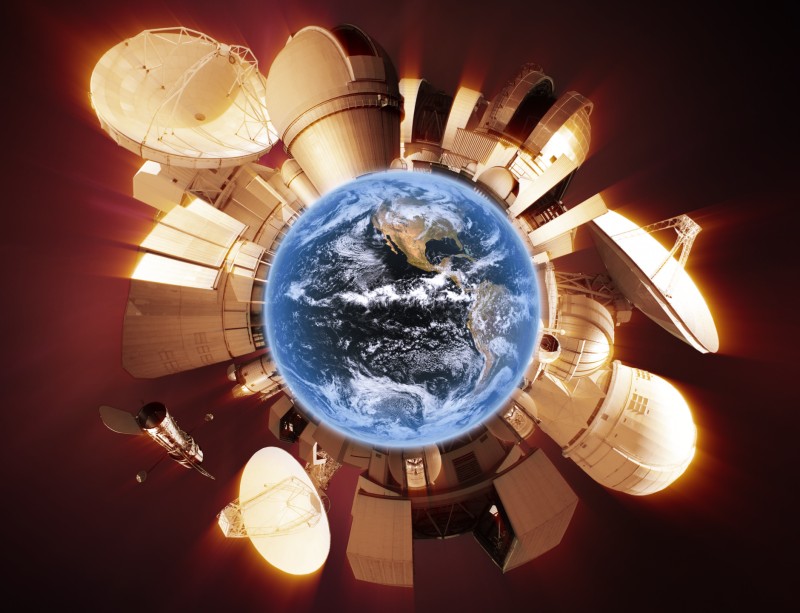
Tuesday, March 24, 2009
Lights Out for Earth
Saturday, March 21, 2009
GLOBE At Night Update

Although I'm planning to submit several observations over the course of the project, checking various sites besides my own backyard, that's the only observation I've submitted so far but I've at least gotten that much done. Have you taken your turn yet? Come on... step outside tonight, enjoy the evening sky and help advance our understanding of the impact of light pollution on the world!

Monday, March 16, 2009
Help Measure Light Pollution Around the Globe
Participating is as simple as:
- Find your location in longitude and latitude
- Locate the constellation Orion in the evening sky about an hour after sunset
- Match what you see to examples provided on the GLOBE at Night web site
- Report your observation
This is another great way to help celebrate the International Year of Astronomy. Get outside tonight and do your part... I'll be out there, too!
Friday, February 27, 2009
Venus and Crescent Moon Conjunction
Even if you miss spotting Venus during daylight today, be sure to step outside in the evening to check out the beautiful pairing as it gets dark. It's already dark in the U.K. and folks like Nick Bramhall have already starting capturing this stunning sight. Read more about it at NASA Science site.
Monday, February 23, 2009
Comet Lulin at Closest Approach
For more information on Comet Lulin, check out these sites:
Friday, February 20, 2009
Spotting Venus in Daylight
At its brightest, Venus is normally1 the third brightest object in the sky behind the Moon and the Sun. We don't typically see celestial objects during the day other than the Sun and, depending on its phase, the Moon. The reason has to do with contrast - the difference in brightness between two objects. To see an object in the sky, it has to be brighter than the background. That's why you can see stars at night but not during the day: the scattering of sunlight in the atmosphere makes the sky too bright compared to the stars. This is also why you can't see the Milky Way in urban areas. Light pollution increases the brightness of the sky, reducing the contrast between the Milky Way and the background sky until there isn't enough difference for the Milky Way to stand out.
So, if you can't see stars during the day then is it possible to see Venus? As bright as it gets (apparent magnitude -4.7), it is still not nearly as bright as the Moon (-12.6). As it turns out though, it is bright enough to see in broad daylight. You just have to know where to look.
1 According to this Wikipedia article, objects (past and present) brighter than Venus include the Crab supernova of 1054 and Iridium satellite flares.
Wednesday, February 18, 2009
Geek's Night Out
- I quit work early
- Linda and I had an early dinner and drove all the way across town
- Showed up an hour and a half before the doors opened to be sure we got good seats
- Sat in rapt attention throughout a show that was supposed to last about 2 hours but went on for over 3 hours
- Stood in line afterwards for 45 minutes to get an autograph
- Didn't get home until well after midnight
 As mentioned in my last post, we'd heard last week that Dr. Neil deGrasse Tyson was scheduled to speak at University of Texas at Arlington last night. Thankfully, we also got a reminder email that mentioned they expected a large turnout. It was good we got there early as, by the time Dr. Tyson took the stage, Texas Hall was completely packed, all 2700 some odd seats. Although the long wait could have been boring, we ran into RCYC friends - Burt and Mary Scott - and had a great time visiting. Burt teaches Astronomy at Eastfield College and is also an avid amateur astronomer - I enjoyed hearing about the new telescope he is building while we waited for the show to start.
As mentioned in my last post, we'd heard last week that Dr. Neil deGrasse Tyson was scheduled to speak at University of Texas at Arlington last night. Thankfully, we also got a reminder email that mentioned they expected a large turnout. It was good we got there early as, by the time Dr. Tyson took the stage, Texas Hall was completely packed, all 2700 some odd seats. Although the long wait could have been boring, we ran into RCYC friends - Burt and Mary Scott - and had a great time visiting. Burt teaches Astronomy at Eastfield College and is also an avid amateur astronomer - I enjoyed hearing about the new telescope he is building while we waited for the show to start.If you've ever seen Dr. Tyson on PBS, the Tonight Show, the Daily Show or any of his other appearances on TV, you understand what a dynamic speaker he is. And while many people know him as one of the most vocal advocates for the idea that Pluto is not the 9th planet but instead the first Kuiper Belt object discovered, that wasn't what he was in town to talk about. Instead, he was here to talk about science illiteracy in America and to explain his ideas on what to do about it.
 Before getting down to business, Dr. Tyson first got comfortable, unloading his pockets of wallet and cell phone and even shedding his cowboy boots. Although he was born and raised in New York, he spent 6 years working on a Masters Degree at University of Texas in Austin and obviously picked up on our local fashion sense and attitudes towards casual attire.
Before getting down to business, Dr. Tyson first got comfortable, unloading his pockets of wallet and cell phone and even shedding his cowboy boots. Although he was born and raised in New York, he spent 6 years working on a Masters Degree at University of Texas in Austin and obviously picked up on our local fashion sense and attitudes towards casual attire.Dr. Tyson then illustrated and described the history of commitment to science by various countries and cultures, starting with a series of diagrams based on the Periodic Table of Elements. This wasn't anything like the PTE you dreaded in high school - it was more of a map and timeline, showing things like which countries discovered (and named) each element, when they were discovered, etc. In the end, the picture he painted was that until recently the U.S. has been a dominent force in scientific discovery but that the new trend is diminishing emphasis on (and investment in) science. He then went on to cover numerous examples of our cultural scientific ignorance including our fear of the number 13 (most buildings still don't have a 13th floor) and celebration of Groundhog Day (when you didn't have advanced computer models to tell you what to expect of the weather, you might as well let a ground hog decide but why do we still bother?).
There were two other key points from Dr. Tyson's presentation. First, that significant investment in science most frequently stems from war or, in the past, colonial expansion. Examples include the influence the Cold War had on the Space Race between the U.S. and Russia and the failure to fund completion of the Super Conducting Super Collider as the Cold War ended. Second, that there is no better way to ensure economic growth and prosperity than through scientific innovation. The bottom line? It's that our future depends on changing the trend, finding ways to increase interest in science education, bring about cultural change such that we celebrate and embrace science and scientific advancement rather than shun it, and to stimulate investment in scientific research. Preferably without another war.
Many of the ideas he proposed centered on NASA. In speaking on NASA's role in American science, he suggested that instead of continuing to invest resources in "going where hundreds have gone before" - sending men into low earth orbit - NASA should leave that to commercial companies and go back to pushing the boundaries of space exploration, pursuing lofty goals such as sending men to Mars or mining asteroids for natural resources. Besides facilitating accomplishments for which there is not yet a viable business model, NASA would be continuing its historical role of achieving the seemingly impossible and, in doing so, inspire new generations of scientists. Of course, that sort of thing isn't cheap but Dr. Tyson stressed how little it would take citing that NASA's entire budget is currently only 6 tenths of a cent out of every tax dollar. Imagine what they could do if we spent just another 6 tenths of a cent per tax dollar to double NASA's budget...
Dr. Tyson ended his talk with a mathmatical progression, starting with 1 and ending with one quadrillion, using each step to relate the number to something concrete such as the number of grains of sand on a beach (having fun with dimmed lights and the number Sextillion along the way). While some people look at images such as the densely packed starfield projected behind Dr. Tyson to illustrate septillion (the number of stars in the observable universe) and feel small, he said that he prefers to look at it in a different way. Knowing that we are made of the same elements as the cosmos and that, in spite of how little we understand about the universe, the human mind was capable of building the Hubble Space Telescope and discovering just how vast the universe is gives him a feeling of connection to the cosmos and an appreciation of its majesty.
After his presentation Dr. Tyson conducted an extended Q&A session, finally wrapping up over 3 hours after he started. It's late now (need to catch up on the sleep I didn't get last night) so I won't get into details on his responses other than to highlight one of the last and most amusing. A 10 year old boy stepped up to the microphone to ask what Dr. Tyson would do with a black hole if he could control one. After asking why the boy was up so late (answer: he's home schooled and was there on a field trip with his parents), he explained how hard it would be to control a black hole but that, if you could, what a great trash dump it would make!
 By the way, if there is any question of who the Geek is in the title of this post, who do you think surprised Dr. Tyson by bringing an article on the Pluto debate from the December issue of Sky and Telescope for him to sign? I guess that makes me almost as big a geek as the guy who brought in a telescope eyepiece for him to sign.
By the way, if there is any question of who the Geek is in the title of this post, who do you think surprised Dr. Tyson by bringing an article on the Pluto debate from the December issue of Sky and Telescope for him to sign? I guess that makes me almost as big a geek as the guy who brought in a telescope eyepiece for him to sign.Another great way to celebrate IYA2009!
Related links
UTA article on Dr. Tyson's apperance
News video on WB 33 TV
Interview on KERA program Think
The Pluto Files
Friday, February 13, 2009
Opportunity to Meet a Star
Wednesday, January 28, 2009
Help Choose Where to Point Hubble
 If you're like me, you've enjoyed seeing some of the really amazing photographs produced over the years by the Hubble Space Telescope like this one of the Cat's Eye Nebula. Whether your interest is in the scientific advances associated with its imaging or just the sheer beauty, I think most all of us find the Hubble images uniquely fascinating.
If you're like me, you've enjoyed seeing some of the really amazing photographs produced over the years by the Hubble Space Telescope like this one of the Cat's Eye Nebula. Whether your interest is in the scientific advances associated with its imaging or just the sheer beauty, I think most all of us find the Hubble images uniquely fascinating. Saturday, January 24, 2009
Astronomical Tunes
New Texas Astronomical Society Member
Sunday, January 18, 2009
City Lights
Our youngest sons are just about to turn 24. When they were small, we could sit in the backyard and clearly see the Milky Way rising up from the southern horizon and crossing overhead. I can't see it at all now and haven't been able to for probably 10 years or more.
While I can still enjoy observing from my own yard, the best targets are obviously the moon and planets... dim fuzzies are just too dim. As an example of the night-time illumination in my area, see the photo City Lights to the right. No, that wasn't taken during daylight. Look closely and you'll notice some faint star trails and even Polaris just to left of center. That shot was taken around midnight under clear skies; the exposure was 30 minutes at F/11 and ISO 200. Compare it to Twinkle ..., taken by Jamal Alayoubi in the Swiss countryside northeast of Lake Geneva. His exposure was almost 4 times as long at F/5 and ISO 500.
One of the most dramatic examples of just how bad light pollution has gotten in certain areas is the light pollution maps at The Night Sky in the World. To see how severe the problem has gotten in my hometown, check out this light pollution map for Dallas, Texas provided by cleardarksky.com. Mesquite is about half-way between the center of the image and the right side. Ouch!
While it is a shame to lose the connection our ancestors had with the sky, there are serious reasons for concern over light pollution including wasted energy, upsetting the natural rhythms of nocturnal animals and birds and possibly even impacts to our own health. The good news is that the issue seems to be getting more attention in the press. National Geographic published a great article on the subject this past November. And while reviewing the International Dark-Sky Association web site for other media coverage, I discovered that Think, one of my favorite programs on our local PBS radio station, KERA, recently highlighted the subject of light pollution. Hopefully, the increased attention - possibly aided by the International Year of Astronomy 2009 events - will begin to make a difference. I'd love for my grandkids to some day see the Milky Way from my backyard.
Sunday, January 11, 2009
First Full Moon of 2009
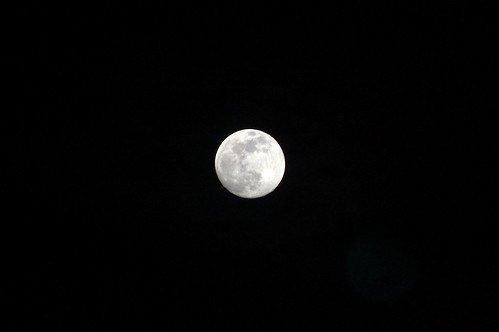
Nearly Full Moon, originally uploaded by neatonjr.
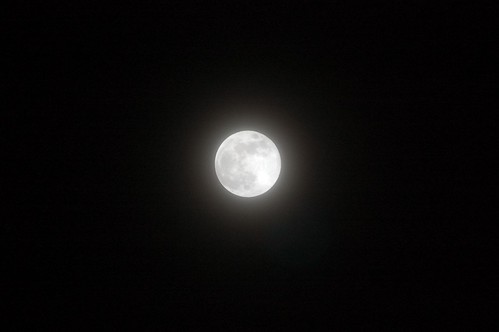
Hazy Moon, originally uploaded by neatonjr.

Moon Ring, originally uploaded by neatonjr.
A few quick shots to record the lunar start to IYA2009. Snapped one Friday when it wasn't quite full yet, then tried again this evening once it was full. Too many clouds, so I never got a clear view. Around midnight, though, I stepped out one last time to catch a spectacular moon ring! That definitely made up for missing out on a clear view tonight.
It was interesting to note that the moon was nearly straight overhead when I took the moon ring shot above. Not only was it near the zenith, but was about 73 degrees above the horizon. Why so high? As Astroprof explains, it has to do with the earth's tilt and the fact that since the full moon is directly opposite the sun, during the time of year when the sun is low in the sky for our hemisphere the full moon is at its highest.
I am still researching but suspect that the moon being nearly straight overhead contributed to how large the moon ring was. I'll post more when I have an answer.
Saturday, January 10, 2009
And now for something completely different
Ok, so I'm off topic on this one, but the new DSO music director, Jaap Van Zweden, pulled off a variation on the traditional Viennese New Year Concert tonight - all three encores - and it was FUN!
I have to say with some embarrassment, I've donated a lot of money to the DSO over the years. No, not the donations the tax man recognizes - done plenty of those and proud of it. I'm talking about the number of times I've spent good money to attend a concert only to doze through some portion of it. It isn't that I don't enjoy the music... most of it I really enjoy. It's just that with season tickets some times I have to be there but am too tired or stressed to really focus on the music. Not tonight! It was an hour and a half of lively, moving music... I even enjoyed the Stokowski version of Pictures at an Exhibition.
I'm not the expert that each of my classically trained sons are (Brian on viola, Chris on trombone), but I do know what I enjoy and I thoroughly enjoyed all the music tonight. Of course, it might be a bit of nostalgia. Back when the DSO was less famous, they used to come and perform at area schools as part of their student outreach. Tonight's concert, with The Light Calvary Overture, The Typewriter and the Thunder and Lightning Polka took me straight back to grade school. Of course, now the schools go to the DSO - we were surrounded by kids from several area schools. I hope they enjoyed the concert as much as I did!
Friday, January 9, 2009
Seeing the Real Thing
Thursday, January 8, 2009
Astronomer's Friend
As cool as that is, the point of this post is something that takes this to the next level. I just received the following email (and I get email on my phone, so I saw it come in immediately):
Favorable observing conditions at Dallas
Based on your Default subscription.
Opportunities to observe at: (Clouds/Trans/Seeing)
01-08 @ Hour 19 for 4 hours (0%/Transparent/Good)
Check out your clock at http://cleardarksky.com/c/Dallaskey.html
- - - - - - - - - - - - - - - - - - - - - - - - - - - - - - - - - -
Consider a sponsorship of the Clear Sky Alarm Clock.
Reach over 3000 astronomers every week with your message.
Inquire at csacadmin@casazza.net
This tells me that the skies above Dallas will have no clouds, will be very transparent and will have good seeing at 7pm for the following 4 hours. Based on this, I can take a closer look at the clear sky chart itself and also see that it won't be incredibly dark until the wee hours when the moon sets, that the wind and humidity will be low and the tempurature moderate.
Very cool, huh? This is thanks to the efforts of Mark Casazza, who runs a site called Clear Sky Alarm Clock. When you sign up for Mark's service, you can configure one or several "alarms" that trigger an email like the one above when a specific set of conditions are coming up. I have one alarm (Default) that tells me when the seeing will be generally good at my home. I also have one that goes off when conditions are going to be excellent and one for when daytime solar observing on the weekend will be good. I won't go into the details of all the features here - go check it out for yourself.
Meanwhile, it's time for me to run... need to get ready to get the scope out and take advantage of the clear skies!
Wednesday, January 7, 2009
Family Affair
Tuesday, January 6, 2009
Spaceweather.com: 2009 Quadrantid meteor gallery
A Quiet Sun
IYA2009 shot for January 3rd. The Sun, shot with Nikon D40, 55-200mm VR lens at 200mm, through Baader solar film filter. Deep in the depths of the solar minimum, no sun spots in sight. For information on when sunspots are visible, be sure and check out SpaceWeather.com.
Moon, Venus and Photographers
Here's my post for 2nd day of the IYA2009.
Back in December 1956, when my Mother was 5 months pregnant with me, she and my Dad climbed the levee on the south side of the Trinity River below downtown Dallas and took a shot of the city skyline. Having recently had all my Dad's slides digitally scanned, we ran across that shot and decided to recreate it. We went down to the same spot with a family friend to shoot the skyline at sunset and after dark. You can see one of the skyline shots here.
While my Dad and Steve took a break from shooting downtown, I turned my camera on the two of them with the Moon and Venus in the sky behind us.
New Year Moon
This was a "first light" shot using my Nikon D40, new T-Ring and remote shutter control with my Meade LXD55 SN10. I had a devil of a time getting focus right - focusing the D-SLR at prime focus is a bit more difficult than the old Minolta SRT201 was - but I learned a lot and it was a beautiful night to be out under the sky.
Mercury at Twilight
One of my first targets for this year, Mercury hanging low in the western sky not long before sunset. Not as exciting as the view from the front-row seat spacecraft Messenger has, but still a beautify site. I only wish I'd gotten a good shot of Mercury, Jupiter, Venus and the Moon a day or two earlier.
Sunday, January 4, 2009
Plans for IYA2009 Projects
- Networking with other amateur astronomers. I've been meaning to join the Texas Astronomical Society (TAS) for years... it's about time. I've also enjoyed observing with folks like Dwight and Paul before and look forward to doing so again this year.
- Through my photography. Yes, it'll be fun but, more importantly, my hope is that everyone who sees my work - whether here, on Flickr, or anywhere else - will appreciate the sky in a new way or learn something new about astronomy.
- Through star parties. Linda and I have participated in one every year or two for Mesquite schools. Hopefully, there will be more opportunities this year - whether for MISD or other organizations (TAS, etc.). Seeing people's reaction the first time they see Saturn or a crater on the moon is incredibly rewarding!
- Sharing here. As I run across news articles, other people's photos and anything else about astronomy on the web that strikes me as interesting, I'll reference them in posts or add them to Recommended Links.
- Photographing a solar analemma. What is an analemma? Learn about it here. This would be a huge project so not sure whether I've got the time and energy, but I do have some ideas on a way to pull it off.
- Capturing a suburban view of meteor shower. Although I've never had any success watching a meteor shower from our backyard, I've seen a few nice ones out near the lake. This year, I hope to capture images of one (or more) shower. I'd also like to contribute to information gathering efforts to document meteor showers.
- Capture image of a young crescent moon. This is a key event in the Islamic calendar but is also of interest to me both for the challenge and as a unique photography subject.
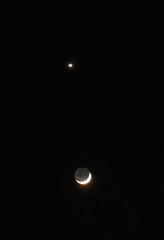

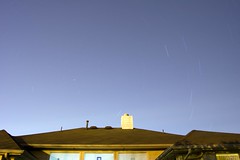
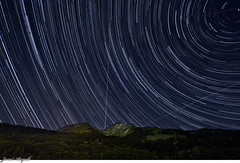

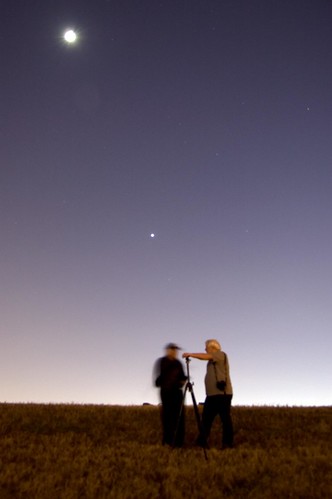
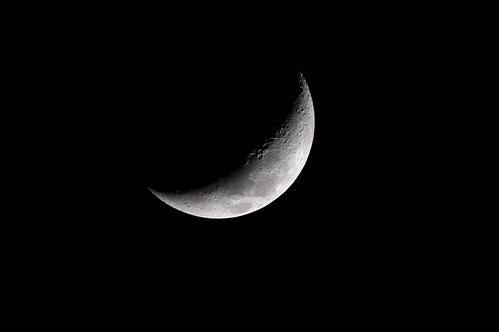
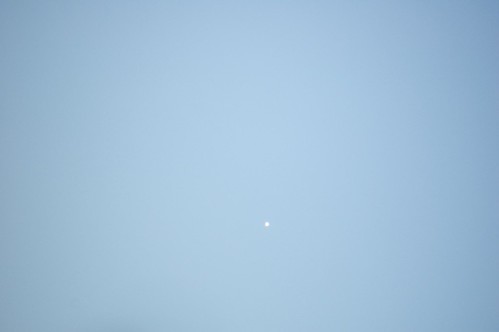




















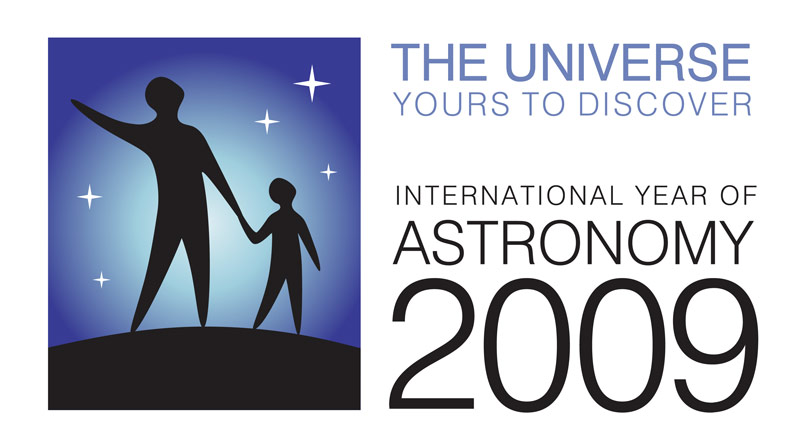 The journey continues beyond 2009... check it out!
The journey continues beyond 2009... check it out!
